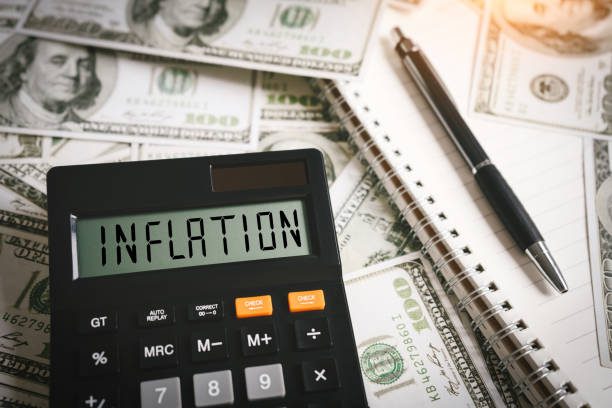What does Inflation Rate Mean?

The inflation rate refers to the percentage change in the average price level of goods and services in an economy over a specific period of time, typically a year. It measures the rate at which the general level of prices is increasing and reflects the erosion of purchasing power of a currency. Inflation is often expressed as an annual percentage increase.
When the inflation rate is positive, it indicates that prices, on average, are rising, and each unit of currency can buy fewer goods and services than before. Conversely, a negative inflation rate, known as deflation, means that prices, on average, are falling, leading to an increase in the purchasing power of money.
The inflation rate is a key economic indicator that is closely monitored by governments, central banks, businesses, and individuals. It provides valuable insights into the health of an economy and influences various economic decisions. To measure inflation, economists and statisticians use various indices, such as the Consumer Price Index (CPI) or the Producer Price Index (PPI).
The Consumer Price Index tracks changes in the prices of a basket of goods and services consumed by households, representing the average household expenditure patterns. It includes a wide range of items, including food, housing, transportation, healthcare, and education. By monitoring the changes in these prices over time, economists can calculate the inflation rate and analyze its impact on consumers’ purchasing power.
The Producer Price Index, on the other hand, measures changes in the prices of goods and services at the wholesale or producer level. It includes the prices of raw materials, intermediate goods, and finished goods. The PPI provides insights into inflationary pressures in the production process and can indicate potential future changes in consumer prices.
Inflation can have significant effects on individuals, businesses, and the overall economy. Moderate inflation is generally considered beneficial for economic growth as it encourages spending and investment. It allows for nominal wage increases, stimulates demand for goods and services, and fosters a favorable business environment. Central banks often aim for a target inflation rate to maintain price stability and support sustainable economic growth.
However, high or unpredictable inflation can have adverse consequences. It erodes the purchasing power of money, reducing the standard of living for individuals and causing financial hardship, especially for those on fixed incomes. It can disrupt business planning and decision-making, making it challenging to set prices, forecast costs, and secure long-term contracts.
Inflation can also lead to distortions in the allocation of resources. As prices rise, consumers may shift their spending habits, favoring essential goods over discretionary items. This can impact the profitability of businesses in certain sectors and lead to reallocation of resources in the economy.
To manage inflation, governments and central banks implement monetary and fiscal policies. Monetary policy measures, controlled by central banks, include adjusting interest rates, manipulating the money supply, and conducting open market operations. By increasing interest rates, central banks can reduce borrowing and spending, which helps to moderate inflation. Conversely, lowering interest rates can stimulate economic activity and encourage borrowing and spending when there is a need to combat deflation or support economic growth.
Fiscal policy, under the purview of governments, involves taxation and government spending. Governments can implement contractionary fiscal policies, such as increasing taxes or reducing government spending, to reduce aggregate demand and cool down inflationary pressures. Expansionary fiscal policies, on the other hand, involve tax cuts and increased government spending to stimulate economic activity during periods of deflation or recession.
Inflation expectations play a crucial role in shaping the behavior of economic agents. If individuals and businesses anticipate high inflation, they may adjust their behavior accordingly. Consumers may rush to make purchases, businesses may increase prices, and workers may demand higher wages. This self-reinforcing cycle can contribute to higher inflation rates.
Central banks often aim to anchor inflation expectations by communicating their inflation targets and policy actions clearly. By maintaining credibility and demonstrating commitment to price stability, central banks can influence inflation expectations and guide economic behavior.
In conclusion, the inflation rate measures the rate of change in the average price level of goods and services in an economy. It is an important economic indicator that provides insights into the health of an economy and influences various economic decisions. While moderate inflation can be beneficial for economic growth, high or unpredictable inflation can have adverse consequences. Governments and central banks use monetary and fiscal policies to manage inflation and maintain price stability. By understanding inflation dynamics and its impact on individuals, businesses, and the economy, policymakers can implement effective measures to achieve sustainable economic growth.
For more information on how to get funding for your business, contact Franchise Funding Solutions:
https://franchisefundingsolutions.com/contact/
